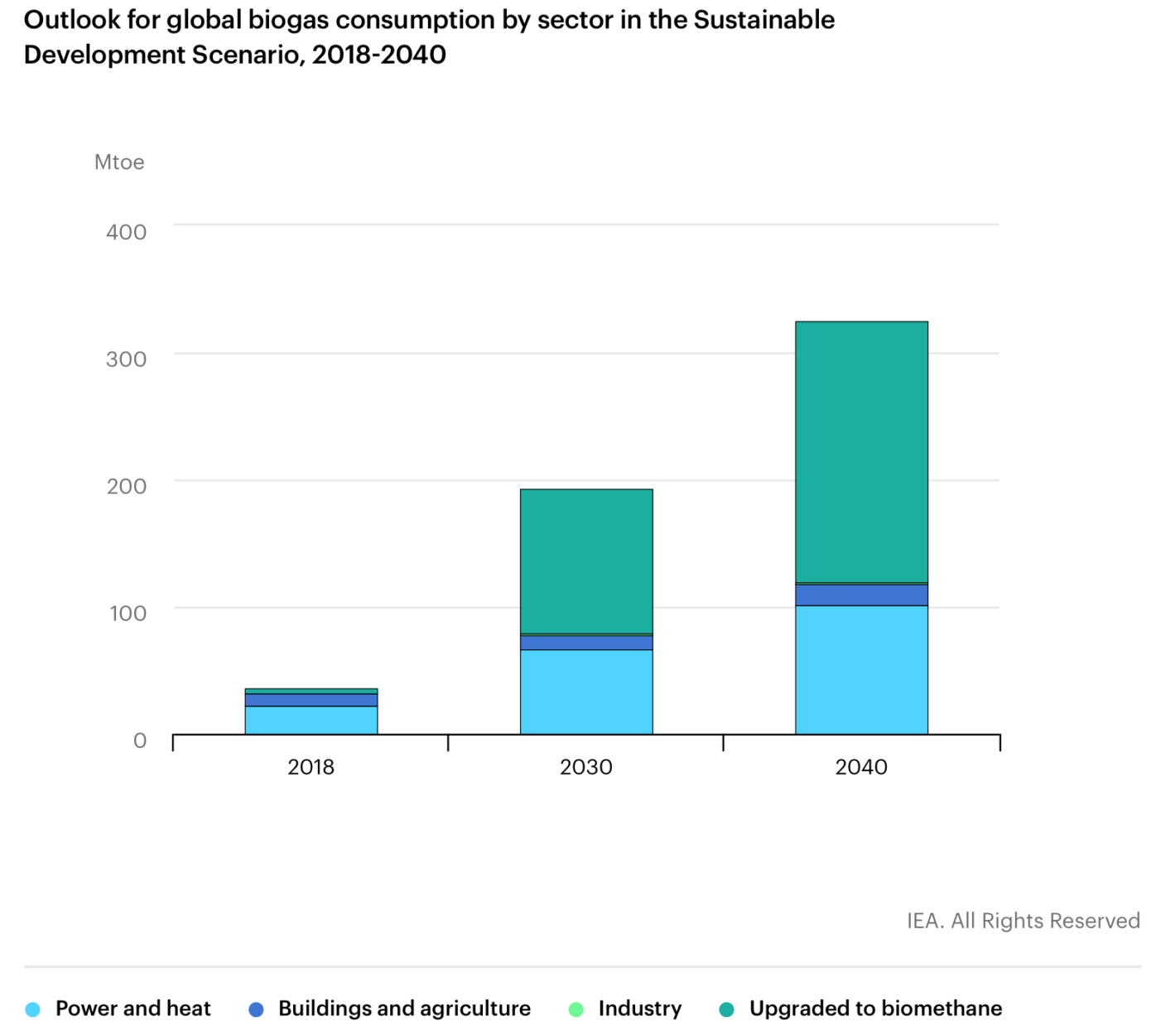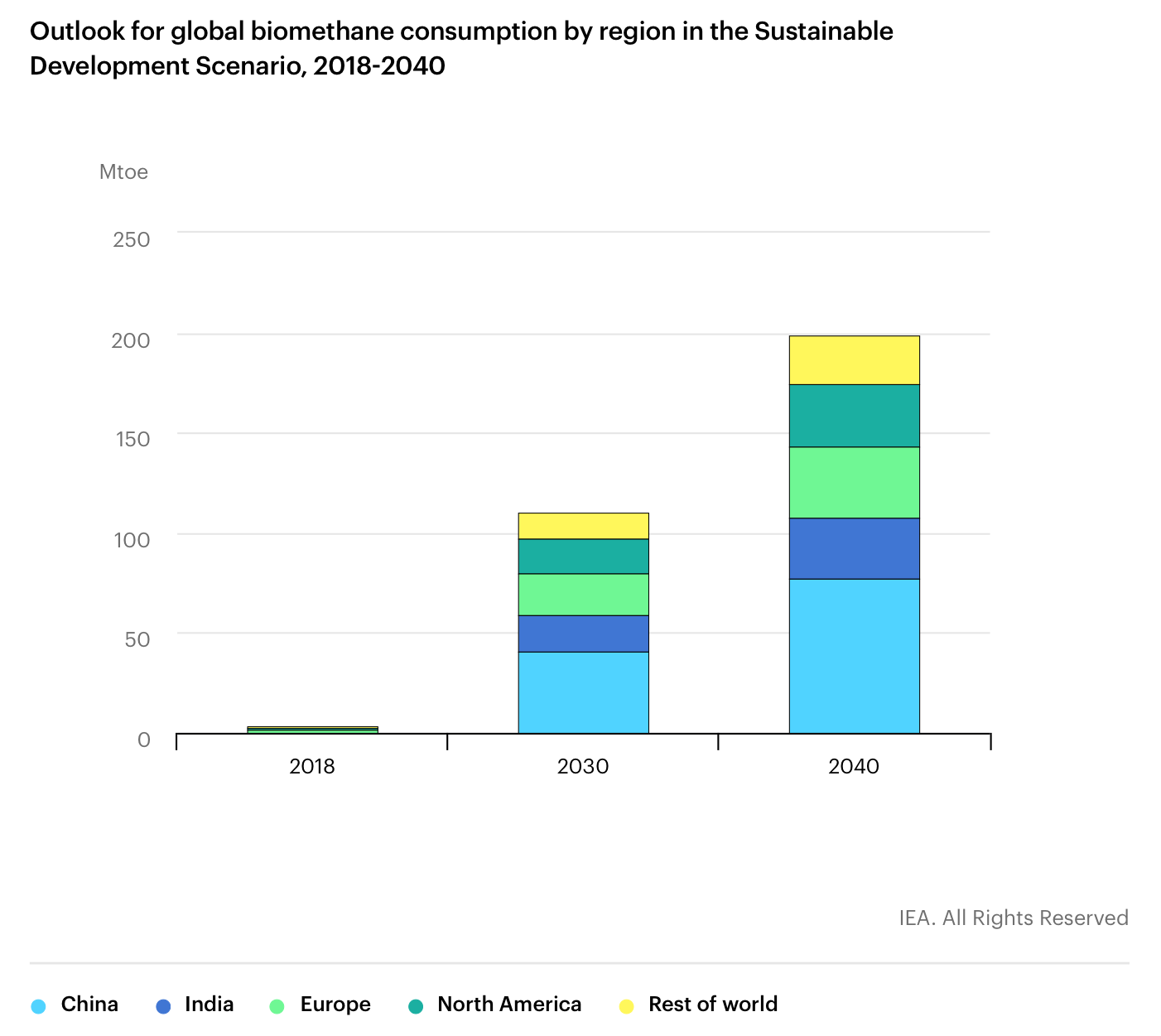The case for biogas and biomethane lies at the intersection of two critical challenges of modern life: dealing with the increasing amount of organic waste that is produced by modern societies and economies, and the imperative to reduce global greenhouse gas (GHG) emissions.
By turning organic waste into a renewable energy resource, the production of biogas or biomethane offers a window onto a world in which resources are continuously used and reused, and one in which rising demand for energy services can be met while also delivering wider environmental benefits.
Biogas can be a valuable local source of power and heat, as well as a clean cooking fuel to displace reliance on the traditional use of solid biomass in many developing countries. There are also potential co-benefits in terms of agricultural productivity (as a result of using the residual “digestate” from biodigesters as a fertiliser) and reducing deforestation.
When upgraded, biomethane (also known as renewable natural gas) is indistinguishable from natural gas and so can be transported and used in the same way. Biomethane can deliver the energy system benefits of natural gas while being carbon-neutral.
The value of biogas and biomethane is heightened in scenarios such as the IEA Sustainable Development Scenario (SDS) [1], which meet in full the world’s goals to tackle climate change, improve air quality and provide access to modern energy. Biogas and biomethane have the potential to support all aspects of the SDS, which charts a path fully consistent with the Paris Agreement by holding the rise in global temperatures to “well below 2°C … and pursuing efforts to limit [it] to 1.5°C”, and meets objectives related to universal energy access and cleaner air.
Biogas and biomethane producers take organic residues and wastes and turn them into a valuable modern source of clean energy
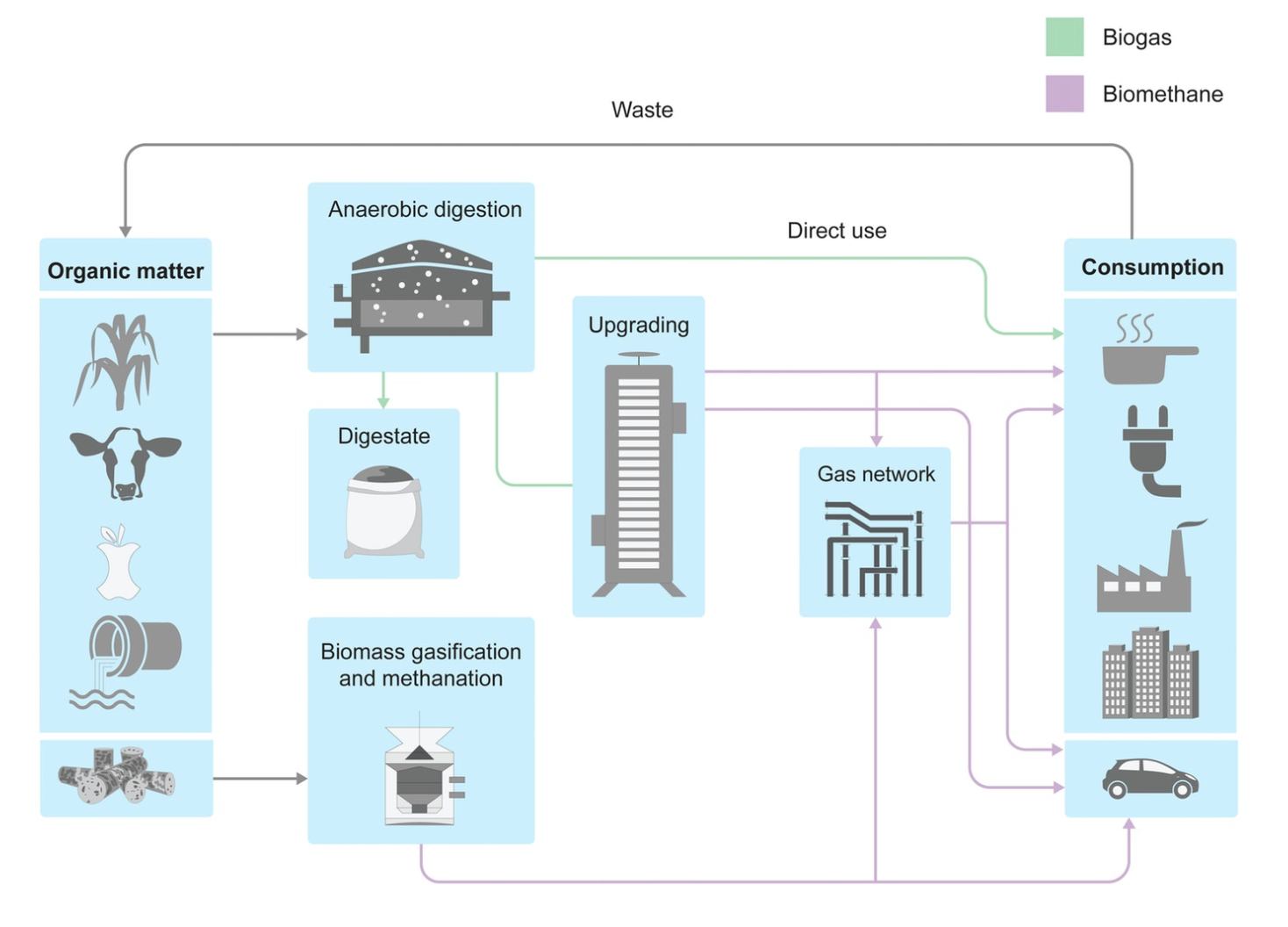
Modern societies and economies produce increasing amounts of organic waste that can be used to produce clean sources of energy, with multiple potential benefits for sustainable development. Biogas and biomethane are different products with different applications, but they both originate from a range of organic feedstocks whose potential is underutilised today. The production and use of these gases embody the idea of a more circular economy, bringing benefits from reduced emissions, improved waste management and greater resource efficiency. Biogas and biomethane also provide a way to integrate rural communities and industries into the transformation of the energy sector.
The feedstocks available for sustainable production of biogas and biomethane are huge, but only a fraction of this potential is used today
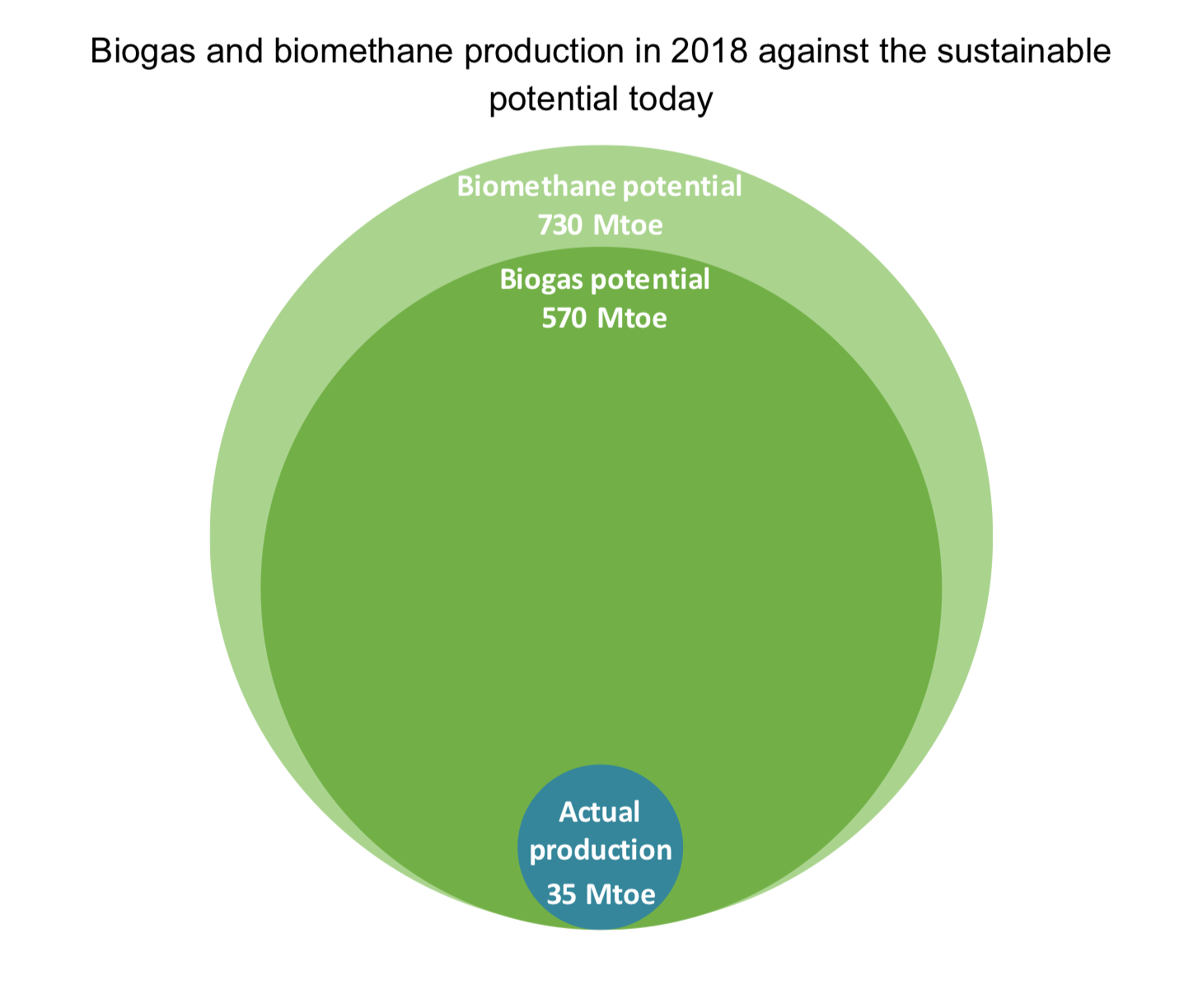
A detailed, bottom-up study of the worldwide availability of sustainable feedstocks for biogas and biomethane, conducted for this report [1], shows that the technical potential to produce these gases is huge and largely untapped. These feedstocks include crop residues, animal manure, municipal solid waste, wastewater and – for direct production of biomethane via gasification – forestry residues. This assessment considers only those feedstocks that do not compete with food for agricultural land. Biogas and biomethane production in 2018 was around 35 million tonnes of oil equivalent (Mtoe), only a fraction of the estimated overall potential. Full utilisation of the sustainable potential could cover some 20% of today’s worldwide gas demand.
Biogas offers a local source of power and heat, and a clean cooking fuel for households
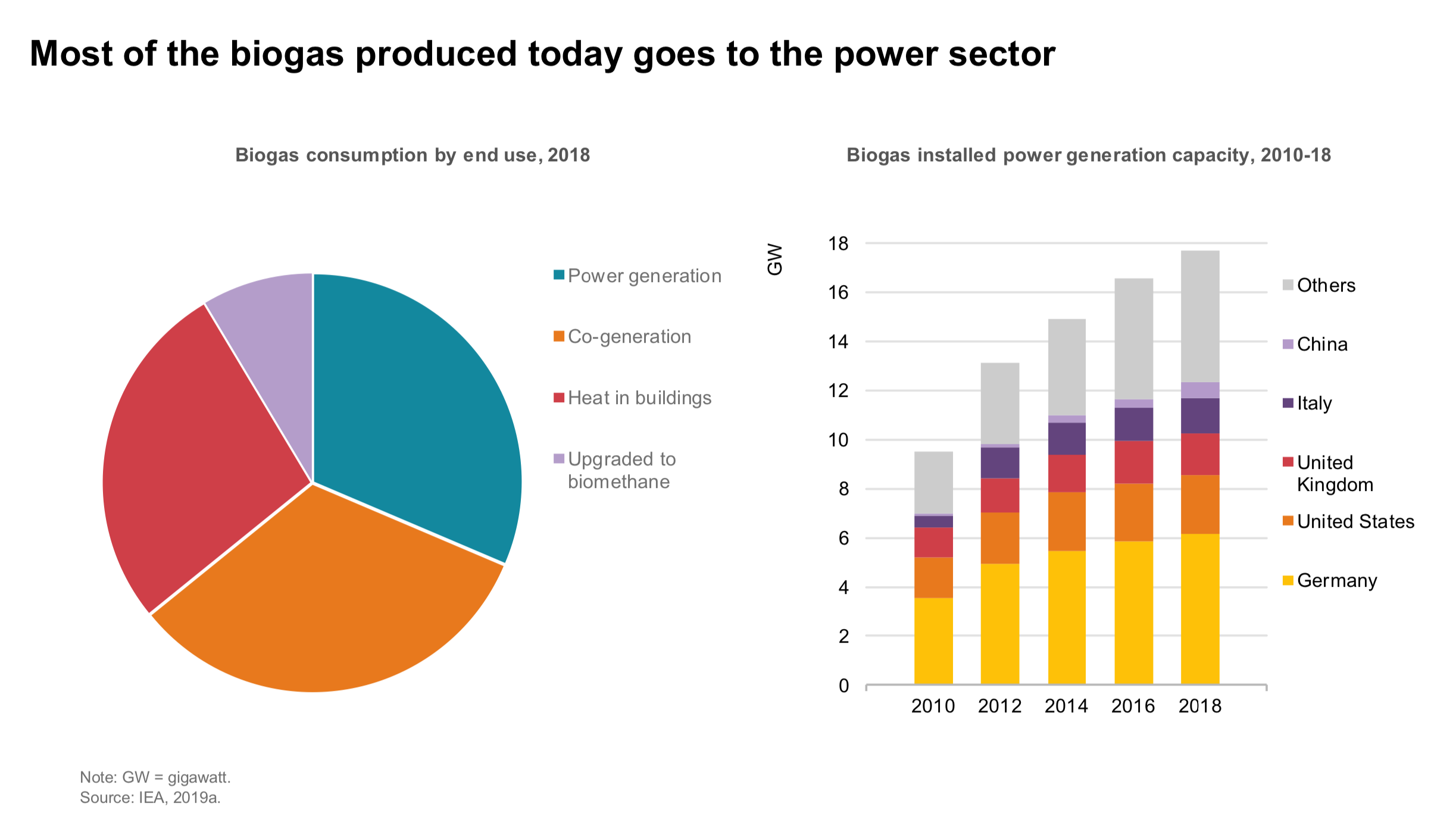
Biogas is a mixture of methane, CO2 and small quantities of other gases that can be used to generate power and to meet heating or cooking demand. Its uses and competitiveness depend on local circumstances, but a common element is that biogas offers a sustainable way to meet community energy needs, especially where access to national grids is more challenging or where there is a large requirement for heat that cannot be met by renewable electricity. In developing countries, biogas reduces reliance on solid biomass as a cooking fuel, improving health and economic outcomes. In the SDS, biogas provides a source of clean cooking to an additional 200 million people by 2040, half of which in Africa.
Biogas can also be upgraded to produce biomethane by removing the CO2 and other impurities.
When upgraded, biomethane brings all the energy system benefits of natural gas without the associated net emissions
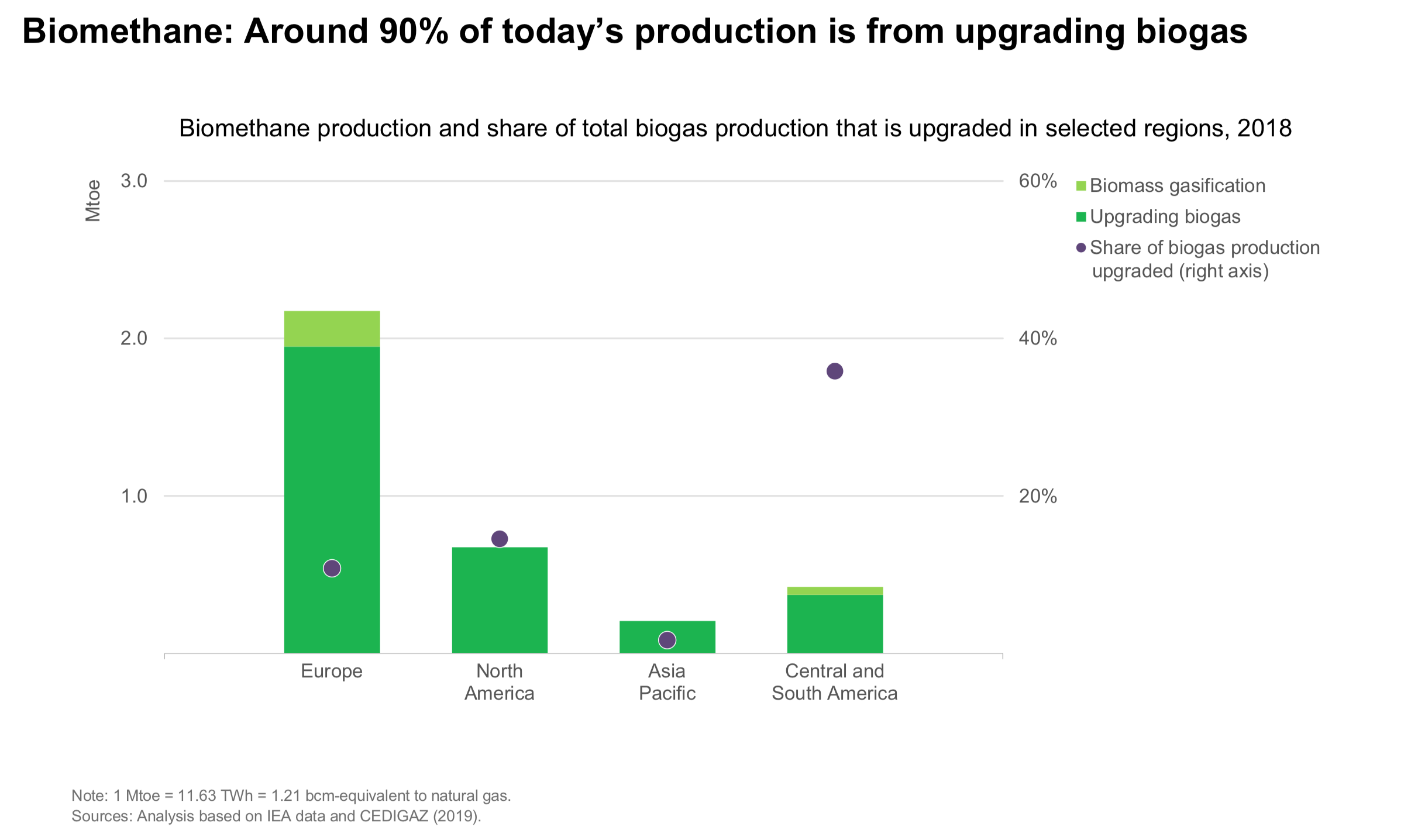
Biomethane is a near-pure source of methane produced either by “upgrading” biogas or through the gasification of solid biomass; since it is indistinguishable from the regular natural gas stream, it can be transported and used wherever gas is consumed, but without adding to emissions. Biomethane grows rapidly in IEA scenarios. It allows countries to reduce emissions in some hard-to-abate sectors, such as heavy industry and freight transport. It also helps to make some existing gas infrastructure more compatible with a low-emissions future, thereby improving the cost-effectiveness and security of energy transitions in many parts of the world.
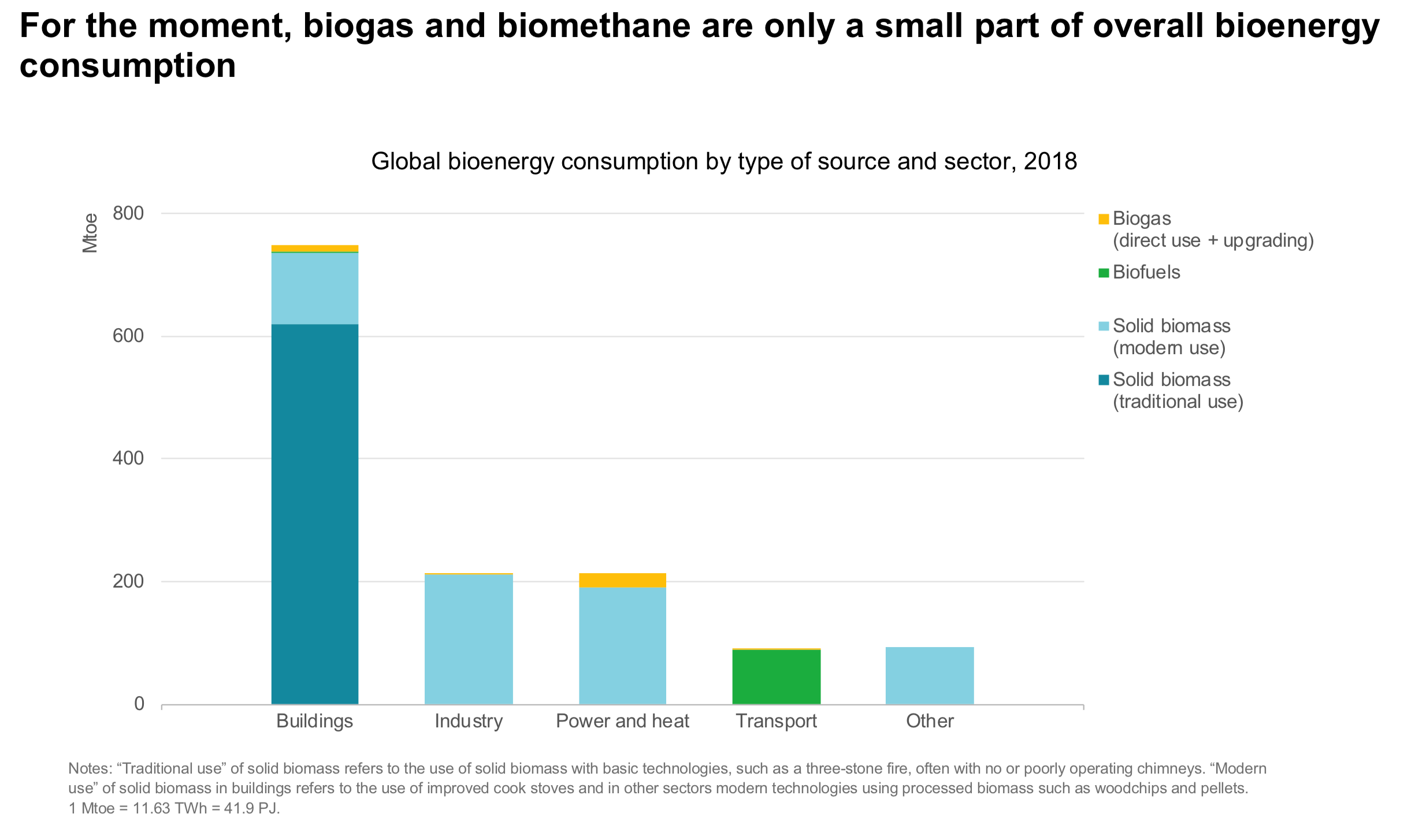
Source: IEA (2020), “Outlook for biogas and biomethane: Prospects for organic growth”, IEA, Paris [1] https://www.iea.org/reports/outlook-for-biogas-and-biomethane-prospects-for-organic-growth
